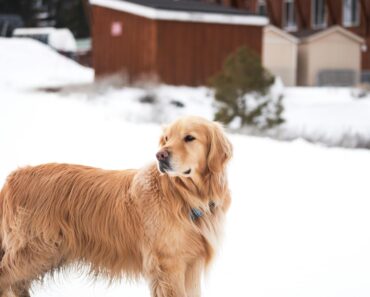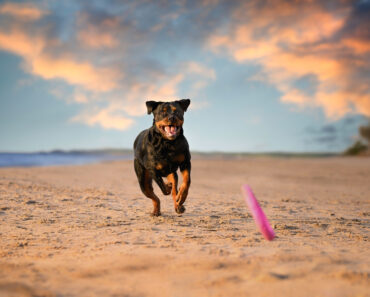As the new year begins, many families think about getting a new pet. If you’re looking at the German Shorthaired Pointer, this guide will help you understand this breed. You’ll learn about its history, how it has changed, its personality, and what it needs. By the end, you’ll know if this dog is right for your family in 2024.
Show the evolution of the German Shorthaired Pointer breed, from its origins as a hunting dog in Germany to its popularity as a family pet in 2024. Highlight the breed’s distinctive features and qualities that make it a great companion for families. Include imagery of the breed working in the field, interacting with children, and participating in modern dog sports. Use warm colors and dynamic compositions to showcase the breed’s active and playful nature.
Key Takeaways
- The German Shorthaired Pointer’s ancestry comes from various hunting breeds from the 17th and 18th centuries.
- This breed has changed over time to become great at hunting, a loyal friend, and a good family dog.
- German Shorthaired Pointers need lots of exercise every day and should be trained well to be happy.
- They need regular brushing and sometimes a bath to stay clean.
- People thinking about getting one should know about possible health issues and that they can live 12-14 years.
The Origins of the German Shorthaired Pointer
In the 16th century, German hunters started mixing different pointing and hunting dogs. They wanted to create a breed that could do it all. This mix included the old Spanish Pointer, the German Pointer, the English Pointer, and the Hannover Hound. These dogs formed the german shorthaired pointer ancestry we know today.
This german shorthaired pointer lineage has given the breed its special looks and behaviors. Over many generations, these traits have become part of who they are.
German Shorthaired Pointer Ancestry
The early German Shorthaired Pointers were great at tracking and retrieving game. Hunters loved them for their sharp senses, speed, and all-around skills. The german shorthaired pointer heritage shows how the breed came to be a top choice for hunting.
German Shorthaired Pointer Lineage
Over time, breeders made the German Shorthaired Pointer even better. It became a favorite for hunters and dog lovers. Its strong desire to chase prey, flexibility, and friendly nature make it a top pick for many.
“The German Shorthaired Pointer’s versatility and intelligence have captivated generations of dog owners, making it a true all-around companion.”
The Evolution of the German Shorthaired Pointer Breed
The German Shorthaired Pointer has changed a lot since it started. Breeders have worked hard to make the breed better. Now, it’s a great hunting dog and a loving family pet.
The breed’s pedigree shows its ongoing improvement. Breeders have chosen the best dogs for many generations. This has made the German Shorthaired Pointer a top choice for hunters and a favorite at home. From its start to now, the breed has become known for being versatile and adaptable.
This breed is great at many hunting tasks. Its german shorthaired pointer pedigree proves it can do a lot. It’s good at upland game hunting, waterfowl retrieval, and tracking.
“The German Shorthaired Pointer is a true jack-of-all-trades when it comes to hunting, making it a prized companion for outdoor enthusiasts.”
Breeders keep working to keep the German Shorthaired Pointer special. They make sure it meets the needs of today’s hunters and families. Their efforts in german shorthaired pointer development and german shorthaired pointer evolution have made the breed a favorite.https://www.youtube.com/embed/-sh-Mgi7Qn0
German Shorthaired Pointer Breed History
The German Shorthaired Pointer has a rich history dating back to the 16th century. German hunters wanted a dog that could track and retrieve game well. They carefully selected breeds to create a versatile dog.
Over time, breeders kept improving the German Shorthaired Pointer. They aimed to make it a top hunting dog and a great family pet.
German Shorthaired Pointer Development
The breed started with crossbreeding different pointers and hounds. These included the Spanish Pointer, the German Bird Dog, and the German Hound. The goal was to make a dog that could handle various hunting tasks.
It could track, point, and retrieve in different environments. This made it a versatile hunting dog.
German Shorthaired Pointer Heritage
As it evolved, the German Shorthaired Pointer became known for its smarts, loyalty, and versatility. Breeders worked hard to keep its unique traits. Today, it’s celebrated for its hunting skills and as a loving family pet.
| Key Milestones in German Shorthaired Pointer History | Year |
|---|---|
| First documented breeding efforts to create a versatile hunting dog | 16th century |
| Official breed standard established by the German Shorthaired Pointer Club | 1870 |
| German Shorthaired Pointer introduced to the United States | 1925 |
| German Shorthaired Pointer recognized by the American Kennel Club | 1930 |
Temperament and Personality Traits
The German Shorthaired Pointer is known for being smart, full of energy, and very loyal. They love active homes because they have a strong desire to hunt and explore. They also become great friends with kids, making them perfect for families.
German Shorthaired Pointer Behavior
These dogs need owners who can keep up with their energy and focus. They are smart and love to learn new things. They do well in hunting, tracking, obedience, and agility competitions.
- Highly adaptable and thrive in active households
- Possess a strong hunting drive and love to explore the outdoors
- Affectionate with their families and often form close bonds with children
- Require ample exercise and consistent training to manage their high energy levels
| Temperament Trait | Description |
|---|---|
| German Shorthaired Pointer Temperament | Intelligent, energetic, and loyal |
| German Shorthaired Pointer Personality | Affectionate, adaptable, and eager to please |
| German Shorthaired Pointer Behavior | High-energy, focused, and versatile |
The German Shorthaired Pointer’s mix of smarts, energy, and love makes them a top pick for active families and those who know dogs well. With the right training and socializing, they become loyal and bring a lot of joy to any home.
A German Shorthaired Pointer sitting confidently with its head held high, displaying an energetic and friendly expression. Its body language should reflect the breed’s enthusiastic and active personality, while also conveying a sense of loyalty and affection towards its family. The background should consist of naturalistic scenery, such as a lush park or a spacious backyard, emphasizing the breed’s love for outdoor activities.
“The German Shorthaired Pointer is the Jack of all trades among hunting dogs. Its versatility is unmatched, making it a popular choice for both hunting and companionship.”
Exercise and Activity Requirements
German Shorthaired Pointers are super active and need lots of exercise every day. They love doing many things like hunting, agility, obedience, and tracking. Owners must give them at least 60 minutes of german shorthaired pointer exercise and german shorthaired pointer activity daily.
These dogs have endless german shorthaired pointer energy. They enjoy long walks, hikes, and playing in big, safe areas. If they don’t get enough exercise, they might get bored, act out, or have too much energy. It’s key to make sure your German Shorthaired Pointer gets enough activity to be happy and healthy.
- Provide at least 60 minutes of intense german shorthaired pointer exercise per day
- Engage in a variety of activities, such as hunting, agility, obedience, and tracking
- Offer lengthy walks, hikes, and playtime in spacious, secure areas
- Prevent boredom, destructive tendencies, and pent-up energy by meeting their german shorthaired pointer activity needs
“A bored German Shorthaired Pointer is a destructive German Shorthaired Pointer. These dogs need a job to do and plenty of physical and mental stimulation to stay happy and healthy.”
Grooming and Maintenance Needs
The German Shorthaired Pointer is an energetic breed that needs regular german shorthaired pointer grooming. This keeps them looking good and feeling great. They have a short, dense coat that sheds a lot, especially in spring and fall.
To keep your German Shorthaired Pointer in top shape, follow a good german shorthaired pointer maintenance routine. Brush their coat every week to get rid of loose hair and spread skin oils. Bathe them when they need it to keep their coat clean.
- Regular nail trims to prevent overgrowth
- Frequent ear checks and cleaning to prevent infection
- Dental care to maintain oral health and hygiene
By focusing on these grooming tasks, your German Shorthaired Pointer will look and feel amazing. With a bit of time and effort, you can keep this lively breed happy, healthy, and well-groomed.
| Grooming Task | Frequency |
|---|---|
| Brushing | Weekly |
| Bathing | As needed |
| Nail Trims | Every 4-6 weeks |
| Ear Cleaning | Monthly |
| Dental Care | Weekly brushing, professional cleaning as needed |
Show a German Shorthaired Pointer being groomed by its owner, with a focus on the dog’s coat. The owner is gently brushing the dog’s fur, and the dog is relaxed and enjoying the attention. The scene should take place in a well-lit room, with natural light coming in from a window. The grooming tools should be visible in the background, including a brush, comb, and scissors. The dog’s coat should be shiny and healthy-looking, with no tangles or mats visible. The owner should be wearing comfortable clothes and have a calm expression on their face, conveying their love and care for their furry friend.
“Proper grooming is essential for keeping a German Shorthaired Pointer’s coat and skin healthy and free of debris.”
Health Considerations and Lifespan
The german shorthaired pointer is usually a healthy breed, living between 12-14 years. Yet, they can face some health issues due to their breeding. Responsible breeders work hard to reduce these risks through careful breeding and health checks.
Some health concerns for the german shorthaired pointer include:
- Hip and elbow dysplasia – a condition that can cause arthritis and make moving hard
- Progressive retinal atrophy – a disease that can lead to losing sight
- von Willebrand’s disease – a bleeding disorder due to a lack of a blood-clotting protein
Owners should team up with a skilled german shorthaired pointer vet for their pet’s health. This includes regular check-ups, shots, and catching health issues early.
| Health Condition | Incidence in German Shorthaired Pointers | Preventive Measures |
|---|---|---|
| Hip Dysplasia | Moderately Common | Screening, Appropriate Exercise, Maintaining Healthy Weight |
| Elbow Dysplasia | Less Common | Screening, Appropriate Exercise, Maintaining Healthy Weight |
| Progressive Retinal Atrophy | Rare | Genetic Screening, Regular Eye Exams |
| Von Willebrand’s Disease | Uncommon | Genetic Screening, Monitoring for Bleeding Issues |
Knowing about german shorthaired pointer health issues and working with a vet can help your pet live a long, healthy life.
Training and Socialization Tips
German Shorthaired Pointers are smart and love to please, making them easy to train. But, their strong hunting instincts and lots of energy can be tough for owners. It’s important to use positive training and socialize them early to make the most of their abilities and create a great pet.
German Shorthaired Pointer Training Challenges
Owners of German Shorthaired Pointers need to keep their dogs mentally active and teach them obedience. These dogs are born to chase and retrieve, so they need training and socializing to be good family pets. With time, effort, and the right training, these dogs can do well in obedience and performance events. They show how smart and eager to learn they are.
It’s key to train German Shorthaired Pointers from a young age. Using positive methods like reward-based clicker training helps use their energy and instincts for good. Also, socializing them early and often is vital. It helps them meet different people, animals, and places, making them confident and well-adjusted.
FAQ
What is the history and origin of the German Shorthaired Pointer?
In the 16th century, German hunters started mixing different dogs to create a breed that could track and retrieve game well. This mix included the old Spanish Pointer, German Pointer, English Pointer, and Hannover Hound. These dogs’ genes have shaped the German Shorthaired Pointer’s looks and behavior over time.
How has the German Shorthaired Pointer breed evolved over time?
Over the years, the German Shorthaired Pointer has changed a lot. Breeders worked hard to make the breed better at hunting and more versatile. Today, it’s known for its great hunting skills, balanced nature, and loyalty. This shows how careful selection has kept the breed excellent for hunting and as a family pet.
What is the temperament and personality of the German Shorthaired Pointer?
German Shorthaired Pointers are smart, full of energy, and very loyal. They love being active and exploring the outdoors. They’re great with families, especially children, but need owners who can keep up with their energy and train them well.
What are the exercise and activity requirements for a German Shorthaired Pointer?
These dogs need a lot of exercise every day to stay happy and healthy. They enjoy hunting, agility, obedience, and tracking. Owners should plan for at least 60 minutes of active play or walks each day. This helps prevent them from getting bored or acting out from too much energy.
What are the grooming and maintenance needs of a German Shorthaired Pointer?
Their short, dense coat needs regular brushing to stay healthy. They shed all year, but more in spring and fall. Brushing once a week helps keep their coat shiny and removes loose hair. Bathing as needed keeps them clean. Don’t forget nail trims, ear checks, and dental care for their health.
What health considerations should I be aware of when owning a German Shorthaired Pointer?
German Shorthaired Pointers are usually healthy, living 12-14 years. But, they can get some genetic diseases like hip and elbow dysplasia, progressive retinal atrophy, and von Willebrand’s disease. Working with a good breeder and a vet is key to keeping them healthy.
What are the training and socialization requirements for a German Shorthaired Pointer?
These dogs are smart and love to learn, making them great with training. But, their hunting instincts and energy can be challenging. Early socialization and consistent training are important to use their talents well and keep them well-behaved. Owners need to keep them mentally and physically active to avoid problems.





